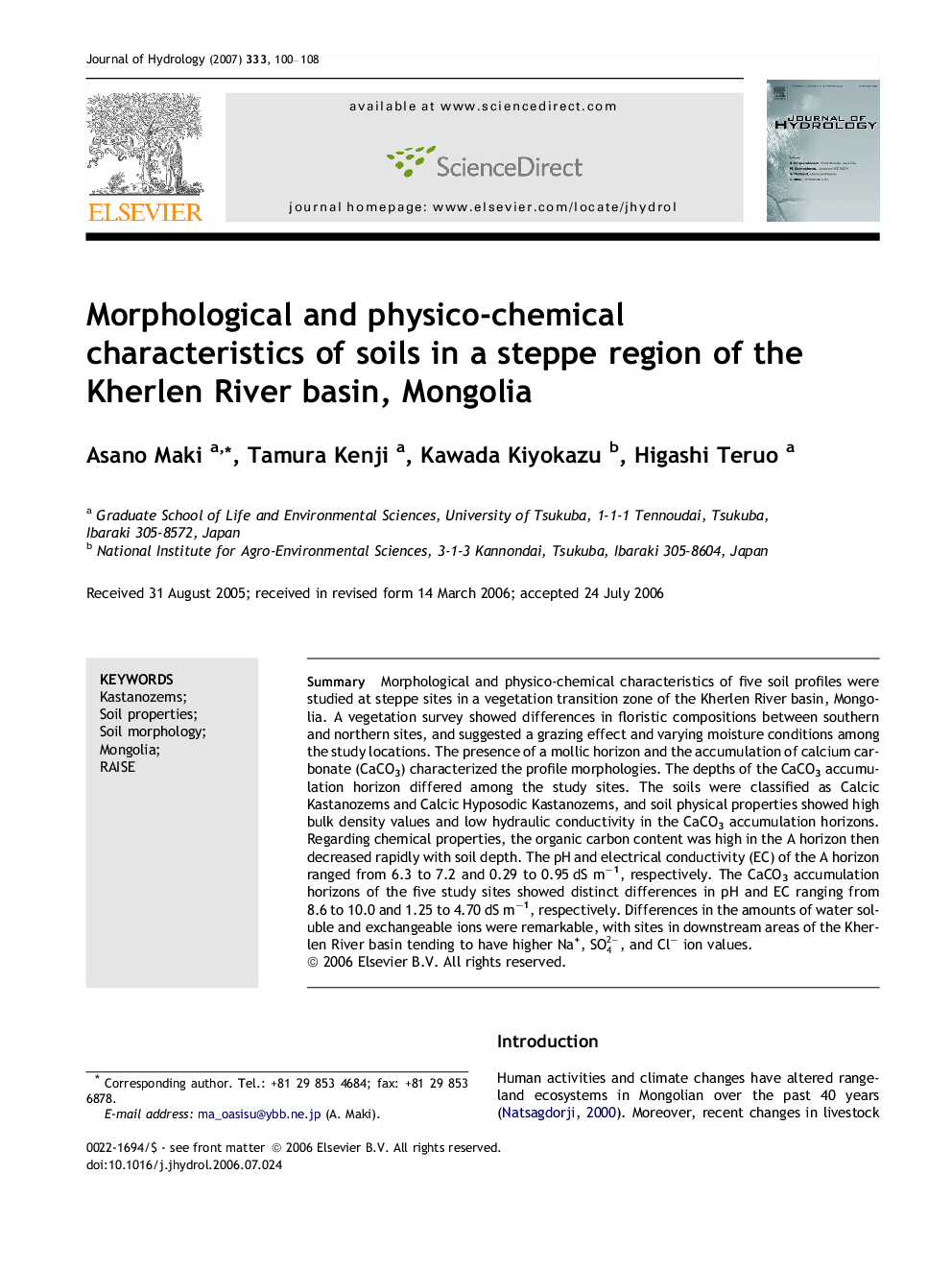| Article ID | Journal | Published Year | Pages | File Type |
|---|---|---|---|---|
| 4580153 | Journal of Hydrology | 2007 | 9 Pages |
SummaryMorphological and physico-chemical characteristics of five soil profiles were studied at steppe sites in a vegetation transition zone of the Kherlen River basin, Mongolia. A vegetation survey showed differences in floristic compositions between southern and northern sites, and suggested a grazing effect and varying moisture conditions among the study locations. The presence of a mollic horizon and the accumulation of calcium carbonate (CaCO3) characterized the profile morphologies. The depths of the CaCO3 accumulation horizon differed among the study sites. The soils were classified as Calcic Kastanozems and Calcic Hyposodic Kastanozems, and soil physical properties showed high bulk density values and low hydraulic conductivity in the CaCO3 accumulation horizons. Regarding chemical properties, the organic carbon content was high in the A horizon then decreased rapidly with soil depth. The pH and electrical conductivity (EC) of the A horizon ranged from 6.3 to 7.2 and 0.29 to 0.95 dS m−1, respectively. The CaCO3 accumulation horizons of the five study sites showed distinct differences in pH and EC ranging from 8.6 to 10.0 and 1.25 to 4.70 dS m−1, respectively. Differences in the amounts of water soluble and exchangeable ions were remarkable, with sites in downstream areas of the Kherlen River basin tending to have higher Na+, SO42-, and Cl− ion values.
